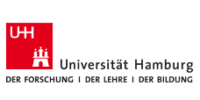Within the fourth role play we discussed the question whether journalism adequately represents the uncertainties with regard to the 2 degree limit. Involved groups spanned media critiques, scientists, politicians, environmental activists and of course us, the journalists. My overall impression is that this debate was much more tame than the last one as opinions didn’t clash quite as much. Even though no major dispute among the groups arose, an interesting discussion followed.
The media critiques started off by pointing out that journalists vary tremendously in the background knowledge about the topic they are reporting on, which makes it a challenge for them to communicate the limits of scientific knowledge within the scope of articles. The intrinsic issues is that the news value of a story is decreased by uncertainties and that supposedly journalists tend to make science look more certain than it is. Furthermore, equal coverage is frequently assigned to both sides of an argument no matter how much weight the sides should receive based on the scientific (un-)certainties behind.
This opinion was partially confirmed by the scientists, who shared the perception that journalists tend to exaggerate findings and report results with more certainty than appropriate. However, according to them the problem is that the public subsequently loses trust in the science itself, but not in journalists capabilities to communicate scientific results. This might also be due to a large share of the general public not understanding basic graphs regarding different emission pathways for instance (which are falsely interpreted as model uncertainties). The question then is: Whose fault is it if a journalist or the public doesn’t understand science?
In our opinion it is the job of scientists to communicate their results understandably to journalists so that they can further communicate this on to the public. The responsibility for good communication of technical terms and figures lies with the scientists as journalists might lack the required level of mathematical and scientific literacy to thoroughly analyse the limitations. This lies in the nature of things and journalists should not be blamed as it is neither their job nor within their qualification to be able to grasp the limitations of every scientific study in depth – especially for complicated modelling outcomes.
Subsequently, the politicians agreed with this division of tasks and even went further by suggesting that journalists should only report about certainties and leave the uncertainty discussion within the scientific sphere. According to them, journalists cannot be expected to be familiar with every aspect of science. As a possible solution they proposed a council, where all stakeholders meet to discuss scientific uncertainties and adequate communication of these. In our opinion this sounded like a terrible idea with regard to freedom of press as journalists must be free from partisan influence on their reporting. Consulting with scientists is one thing, but meeting up with politicians to discuss the details on how to report uncertainties constitutes an outright invitation for politics to influence journalism, which is an especially bad idea in such a delicate and controversial topic.
Lastly, the environmental activists also demanded for their voice to be more clearly heard in the ongoing debate. They invited us journalists to increase cooperation and highlighted the responsibility of journalism in shaping the public opinion by deciding on whose story to write. While we appreciate the invitation to collaborate it is also clear that journalism may not be misused as a tool to exert political influence – no matter if this is attempted by environmental activists, politicians or scientists.


Outside of the roleplay, I would strongly agree with the environmental activists: it is the genuine task of journalism to make complex situations — be it in politics, economics, or science — accessible to the laypersons in the general public.
The interesting question remains: how to comminicate the uncerteinty? In written language, it is hard to use error bars and people would probably not understand. But didn‘t we see a very good example in the video of our first session, where Katharine Hayhoe used the analogy with smoking? People are in fact capable of dealing with uncertain information, only the climate is too abstract to be able to evaluate the uncertainty.